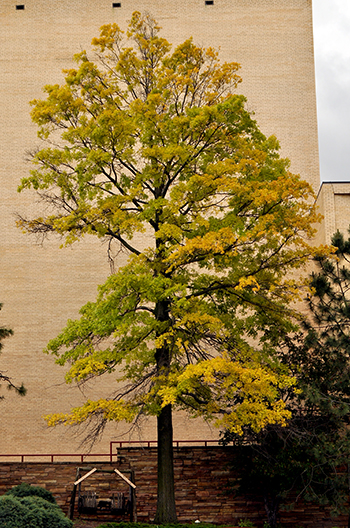Soil pH and Nutrients
Return to Soils Agent Articles
Return to Main Soil Testing Page
 Extension has long recommended that a soil test is the basis for a proper soil fertility program.
Extension has long recommended that a soil test is the basis for a proper soil fertility program.
A soil test reveals the baseline nutritional values of the soil. From this test the type and amounts of fertilizer to use can be determined. In addition, a good soil test will find the pH level of the soil and suggest corrections, if needed.
Soil nutrients
Soil fertility is something that cannot be seen, felt or guessed. It varies from one yard to the next. In many cases the test shows that over time too many nutrients have been applied and additional amounts may be harmful, as is the case with phosphorous and potassium.
Phosphorous and potassium levels tend to build up in the soil. Excess can harm growth, or, worse yet, leach out and pollute streams and lakes. Many garden books recommend a balanced fertilizer such as 10-10-10 or 5-10-5. Long-term use of these products can lead to the problem. By testing the soil we can discover if more is needed.
What is soil pH
The pH is a measure of the acidity or alkalinity of a garden soil. The standard measurement for soil acidity is called the pH or soil reaction. Soil pH is measured on a scale of 0 – 14, with 7 as the neutral mark. Values below 7 are considered acidic. Values above 7 are considered alkaline. Most plants grow best in a soil that is neither too acid nor too alkaline. Soil pH may differ from the desirable range because of rock materials, previous fertilizer use or other factors.
A common misconception by many in our county is that our soils need lime. This is far from the truth as lime raises the pH. Most area soils naturally have a high pH.
A common symptom of high pH seen in Johnson County is iron chlorosis, or iron deficiency in plants that causes yellowing of leaves while the veins remain dark green. Pin oak trees here often show signs of iron chlorosis.
 Soil pH also determines the color of hydrangea macrophylla, also know as big leaf or mophead hydrangea. To get the blue flowers that so many of us covet pH levels must be lowered using sulfur, a typical resolution for high pH levels. Once again, a soil test will determine the needs.
Soil pH also determines the color of hydrangea macrophylla, also know as big leaf or mophead hydrangea. To get the blue flowers that so many of us covet pH levels must be lowered using sulfur, a typical resolution for high pH levels. Once again, a soil test will determine the needs.
Testing the soil to determine pH and nutrients
Testing the soil is easy. First, collect small random samples from the lawn or garden. Six to ten samples are best. Each sample should be dug to a depth of 4 to 6 inches. Mix all these small samples together in a clean bucket. From the random mix, collect two cups of soil for the actual test. Soil samples may be brought or mailed to your closest Cooperative Extension office. Results will be mailed to you in two to three weeks, or longer during the peak spring season.
Soil samples should be taken every three to five years to help monitor changes. For complete information contact the Extension Master Gardener Garden Hotline at (913) 715-7050. Johnson County residents, to get a free soil test click here.